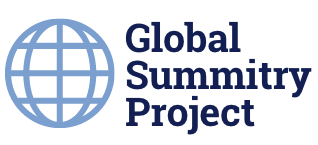In January 2025, the BRICS presidency rotated to Brazil. Soon after, Brazil announced that nine countries would join the new ‘Partner’ category created during the bloc’s Kazan meeting. Partners are not full members, but can participate in BRICS meetings and programming. As of January 2025, the BRICS partner members are: Belarus, Bolivia, Kazakhstan, Cuba, Malaysia, Nigeria, Thailand, Uganda, and Uzbekistan. That same month Indonesia rose to become a full BRICS member, becoming the Bloc’s tenth country to achieve the rank.
With its new members, BRICS now accounts for 46 percent of global GDP and 55 percent of the world’s population.
Expanding its ranks grows its representation across the Global South. That applies particularly to Africa with the inclusion of Nigeria, which Brazil’s announcement paid special attention to as the world’s sixth largest population and one of the most significant economies on the African continent. Indeed, with a population 220 million, Nigeria could be a cornerstone for BRICS in Africa. In exchange, Nigeria gets access to new investment opportunities like the BRICS New Development Bank — a tempting alternative to institutions like the International Monetary Fund or the World Bank that offers less restrictive financing and broadens the country’s menu of options as it seeks to expand its infrastructure and broaden its economy.
Indonesia, meanwhile, maintains deep trade ties with China — meaning the latter could interpret the newest BRICS member fully joining up as a way to expand its influence in Southeast Asia. Nevertheless, Indonesia continues to seek membership in the Organization for Economic Co-operation and Development (OECD). In this light, Indonesia joining BRICS is likely another example of a Global South country on the rise seeking to hedge and pursue non-alignment by participating in a range of organizations rather than pick a side between China and the United States.
The inclusion of new BRICS members does not eliminate the divisions and differences among its members, including those seeking non-alignment and those like Russia with an anti-Western stance. Some analysts reacted to the growing membership by arguing that the bloc’s capacity to absorb this difference of opinion within a looser international organization may be one reason why it is so appealing in an increasingly polarized geopolitical context. Irrespective of how one views the expansion of BRICS, the bloc’s sheer population and economic heft will make the BRICS+ even more weighty with an expanded membership.
The Brazilian presidency has further laid out five goals for BRICS and its expanded membership:
- Facilitating Trade and Investment: Promoting economic integration through the development of efficient payment systems.
- Regulating Artificial Intelligence (AI): Encouraging inclusive and responsible AI governance for development purposes.
- Addressing Climate Change: Enhancing financing mechanisms to support global efforts, in coordination with the COP30 climate summit.
- Public Health Collaboration: Strengthening cooperation projects among member countries, focusing on improving public health systems.
- Institutional Development: Bolstering the internal frameworks of BRICS to ensure effective governance and decision-making.
These goals will inform the expanded membership of BRICS and suggest how the bloc works together as it develops as an institution with a greater number of perspectives and strategies housed in one grouping.
